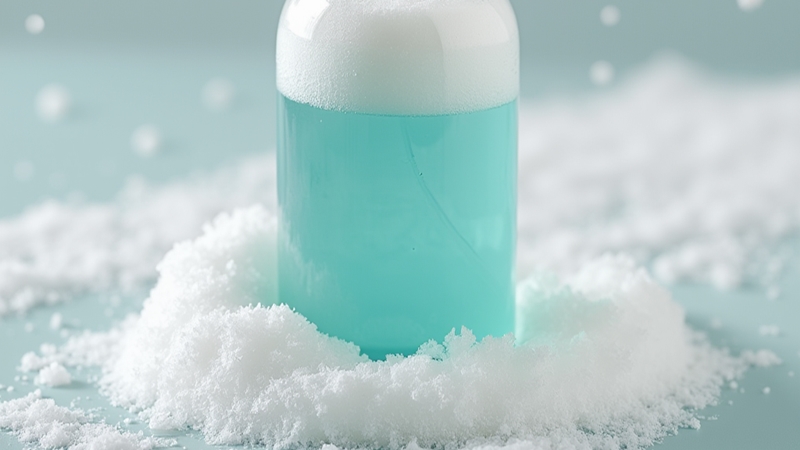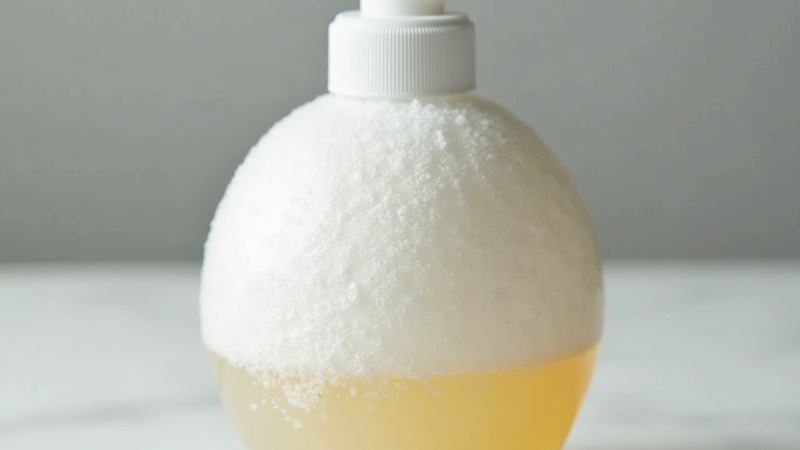Uncategorized
Drawbacks of Foaming Soaps in Your Bathroom
Introduction
Foaming soap has become a popular choice in many bathrooms, from homes to public restrooms. People love its light, airy texture, and the fact that it often feels gentler on the hands. However, despite its convenience and pleasant feel, foaming soap has several drawbacks that many people don’t consider. If you are thinking about switching to foaming soap or already use it regularly, it’s important to understand the downsides. In this blog, we will discuss the disadvantages of foaming soaps in your bathroom and why they may not be the best option for cleanliness, hygiene, and environmental impact.
Foaming Soap Is Less Effective at Cleaning
One of the biggest drawbacks of foaming soap is that it is not as effective at cleaning as traditional liquid soap. When you use regular liquid soap, the process of lathering helps to remove dirt, oils, and bacteria from your hands. Foaming soap, on the other hand, is already mixed with air when it comes out of the dispenser. This means there is less friction and scrubbing action when you wash your hands.
Studies have shown that foaming soap does not remove germs as effectively as traditional liquid soap. Because it spreads more easily and requires less rubbing, people tend to wash their hands more quickly, reducing the overall cleaning effectiveness. If proper handwashing is not practiced, bacteria and viruses can remain on the skin, leading to the spread of germs.
Foaming Soap Can Dry Out Your Skin
Many foaming soaps contain higher amounts of surfactants, which are the cleansing agents responsible for breaking down dirt and oils. While these ingredients help clean your hands, they can also strip away natural oils from your skin. Over time, this can lead to dryness, irritation, and even cracking, especially in colder months when skin is already more prone to dryness.
Traditional liquid soaps often contain moisturizing ingredients like glycerin, aloe vera, or essential oils to help keep skin hydrated. Foaming soaps, however, are usually formulated with fewer moisturizing agents, making them harsher on sensitive skin. If you have dry or sensitive skin, you may find that foaming soap causes more irritation compared to liquid soap.
It May Lead to Increased Waste and Higher Costs
At first glance, foaming soap may seem like a more economical option because it dispenses less product per pump. However, this can be misleading. Because foaming soap is pre-lathered, people often use more pumps than necessary, leading to higher consumption rates. In contrast, with liquid soap, users are more likely to take an appropriate amount and lather it thoroughly before rinsing.
Additionally, foaming soap dispensers are often specialized and need to be replaced more frequently than standard liquid soap dispensers. Many people find that foaming soap refills are more expensive than regular liquid soap, leading to increased long-term costs. If you are looking for a cost-effective solution for your bathroom, traditional liquid soap may be the better choice.
Foaming Soap Dispensers Can Harbor Bacteria
Another major drawback of foaming soap is that the dispensers can become a breeding ground for bacteria. Because foaming soap dispensers work by mixing air with soap, they create a moist environment inside the pump. This moisture can encourage bacterial growth over time, especially in public restrooms where dispensers are touched by multiple people throughout the day.
Refillable foaming soap dispensers can also pose hygiene concerns. If the dispenser is not cleaned properly between refills, bacteria and mold can build up inside the container, contaminating the soap. In some cases, using contaminated soap can spread more bacteria rather than eliminating them.
Environmental Concerns with Foaming Soaps
Many people assume that foaming soap is better for the environment because it uses less soap per wash. While this is partially true, foaming soap has its own environmental downsides.
- Packaging Waste: Many foaming soap products come in plastic dispensers that are not always recyclable. Since these dispensers have specialized pumps, they are often discarded rather than refilled, adding to plastic waste.
- Chemical Ingredients: Some foaming soaps contain synthetic fragrances, preservatives, and other chemicals that can be harmful to aquatic life when washed down the drain. Traditional liquid soaps, especially natural or organic options, often contain fewer harmful ingredients.
- Water Consumption: Some studies suggest that people using foaming soap tend to rinse their hands for a shorter amount of time because they feel like their hands are already clean. However, proper handwashing requires scrubbing for at least 20 seconds. If people are not rinsing properly, the effectiveness of handwashing is reduced, potentially leading to more sickness and higher water usage in the long run.

Limited Availability of Natural and Organic Options
If you prefer using natural or organic personal care products, you may find that foaming soap options are more limited compared to liquid soap. Many foaming soaps on the market contain synthetic fragrances, artificial dyes, and harsh preservatives. While there are some eco-friendly foaming soap brands available, they are not as widely stocked in stores as traditional liquid soap.
Additionally, if you enjoy making your own DIY soap with natural ingredients, foaming soap can be more challenging to work with. The formula needs to be properly diluted to work with a foaming dispenser, which can affect the quality and effectiveness of the soap.
Alternatives to Foaming Soap for a Healthier and Cleaner Bathroom
If you’re concerned about the drawbacks of foaming soap but still want an effective and convenient handwashing solution, there are several alternatives to consider. Each option has its own benefits, depending on your personal preferences and priorities.
Traditional Liquid Soap
The most obvious alternative to foaming soap is regular liquid soap. Unlike foaming soap, liquid soap requires users to create their own lather, ensuring better friction and removal of dirt and bacteria.
Benefits of Liquid Soap:
- More Effective Cleaning: Liquid soap allows for better scrubbing, which helps remove germs more effectively.
- Moisturizing Ingredients: Many liquid soaps contain hydrating ingredients like shea butter, coconut oil, and aloe vera, making them gentler on the skin.
- Versatile Options: There are many fragrance-free, organic, and antibacterial options available for people with sensitive skin or specific hygiene needs.
Bar Soap
Bar soap has been used for centuries and remains one of the best options for handwashing. Some people believe that bar soap is less hygienic because multiple people touch it, but studies show that bacteria do not survive well on soap bars when used properly.
Benefits of Bar Soap:
- Minimal Packaging Waste: Bar soaps usually come in biodegradable or recyclable packaging, making them an eco-friendly choice.
- Cost-Effective: A single bar of soap lasts longer than a bottle of liquid or foaming soap, saving money in the long run.
- Fewer Chemicals: Many natural and organic bar soaps contain minimal additives, reducing exposure to harsh chemicals.
Castile Soap (Diluted for Handwashing)
Castile soap, made from vegetable oils like olive or coconut oil, is a gentle yet powerful cleanser that can be diluted for use as hand soap. It is often sold as a concentrated liquid, allowing users to control the strength of their soap.
Benefits of Castile Soap:
- All-Natural Formula: Free from synthetic ingredients, making it safe for sensitive skin.
- Multipurpose Use: Can be used for handwashing, body washing, and even household cleaning.
- Biodegradable and Eco-Friendly: Does not contain harmful chemicals that contribute to water pollution.
Powder or Tablet-Based Hand Soaps
In an effort to reduce plastic waste, many brands have introduced powder or tablet-based hand soaps that dissolve in water. These products allow users to refill their soap dispensers without constantly purchasing new plastic bottles.
Benefits of Powder/Tablet-Based Soaps:
- Sustainable and Zero-Waste: Usually packaged in paper or compostable materials.
- Customizable Concentration: Users can adjust the soap-to-water ratio to achieve their preferred consistency.
- Easy Storage: Takes up less space compared to traditional liquid soaps.

How to Make the Transition Away from Foaming Soap
If you’ve been using foaming soap for a long time and want to switch to a better alternative, here are a few steps to help you transition smoothly:
Finish Your Current Supply First
Before making a switch, use up any foaming soap you already have to avoid unnecessary waste. You can also repurpose the bottles for DIY soap mixtures or other household uses.
Choose the Right Replacement
Decide which alternative works best for your needs. If you prioritize deep cleaning, liquid soap or Castile soap may be best. If sustainability is your top concern, bar soap or refillable tablet-based soaps might be the way to go.
Invest in a High-Quality Soap Dispenser
If you’re switching to liquid soap, consider purchasing a durable, refillable dispenser made from glass or stainless steel. These dispensers last longer than plastic ones and help reduce waste.
Educate Your Household
If multiple people in your home are used to foaming soap, explain the benefits of switching and encourage proper handwashing habits. This will ensure that everyone gets the best hygiene results from the new soap choice.
Look for Discounts and Bulk Options
Many sustainable soap options come in larger refillable bottles or multipacks that can save money over time. Consider buying in bulk to reduce packaging waste and cut down on costs.
Common Myths About Foaming Soap
Many people believe that foaming soap is more hygienic or that it uses fewer resources, but the reality is different. We could debunk common misconceptions to provide a clearer picture.
DIY Foaming Soap vs. Store-Bought Options
Some people prefer making their own foaming soap by diluting liquid soap with water. Is this a better option, or does it still have the same drawbacks?
Scientific Studies on Hand Hygiene and Soap Effectiveness
Including research findings on how different types of soap compare in germ removal could add credibility to the discussion.
Best Practices for Handwashing (Regardless of Soap Type)
Since proper handwashing is crucial, we could outline the best way to wash hands effectively to minimize germs, regardless of whether you use foaming or liquid soap.
Would you like me to add more sections or adjust the tone for a specific audience? Let me know how you’d like to proceed!
You can easily find hand soap tablets with some of the best scents on Sanixway website!

